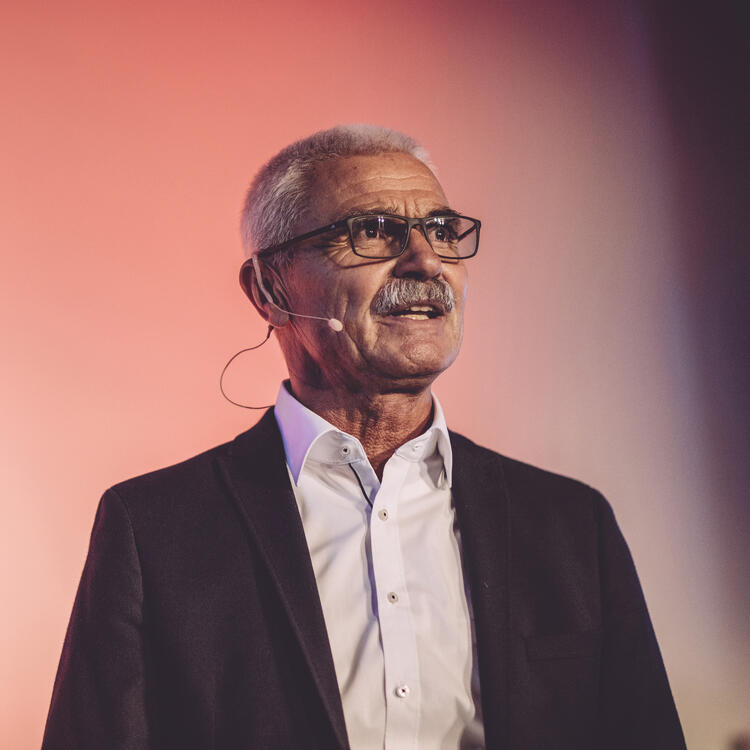

PhysioStar NFC+
Convincingly real
PhysioStar NFC+
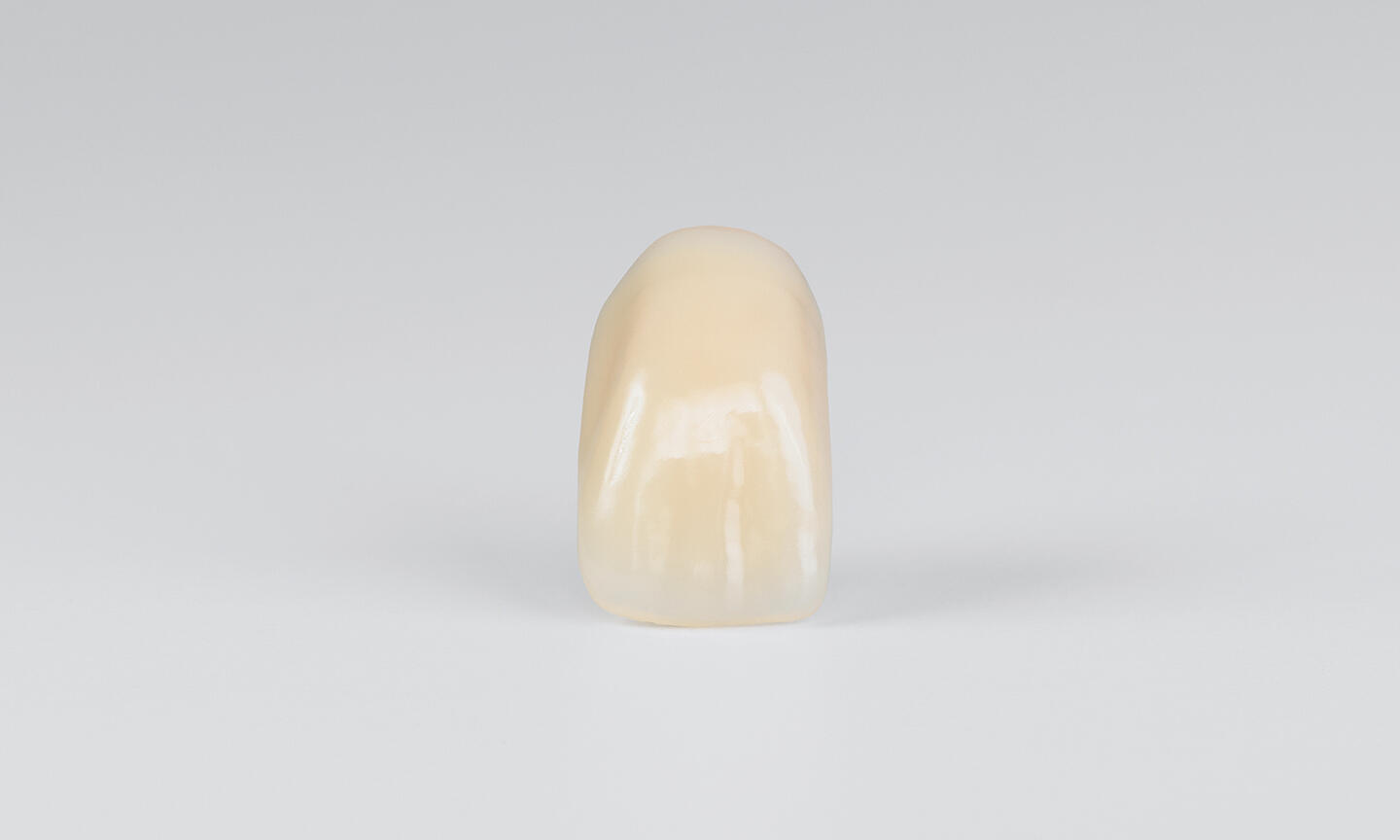
0/0
PhysioStar NFC+
Our PhysioStar brand has accompanied our customers for more than 10 years. The composite denture tooth is the favorite in the CANDULOR portfolio when it comes to maximum esthetics and function. Let us convince you of the authenticity of this tooth line.
Anteriors
Delicate (Group 55)
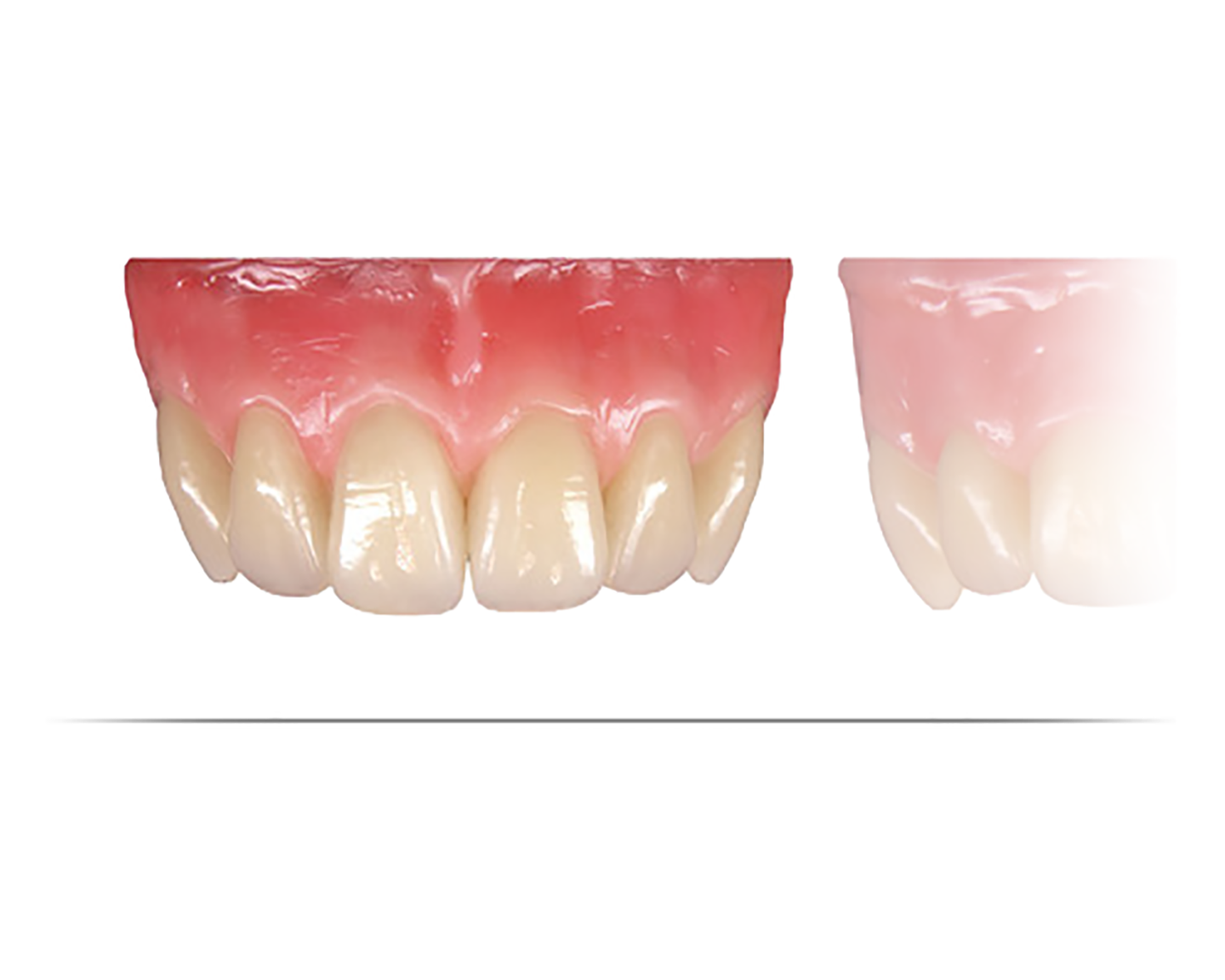
Anteriors 0/0
Delicate (Group 55)
These tooth shapes are distinguished by their delicate and naturally tapered shapes. The gentle design of the contours and the youthful incisal edges differentiate this juvenile group.
Universal (Group 66)
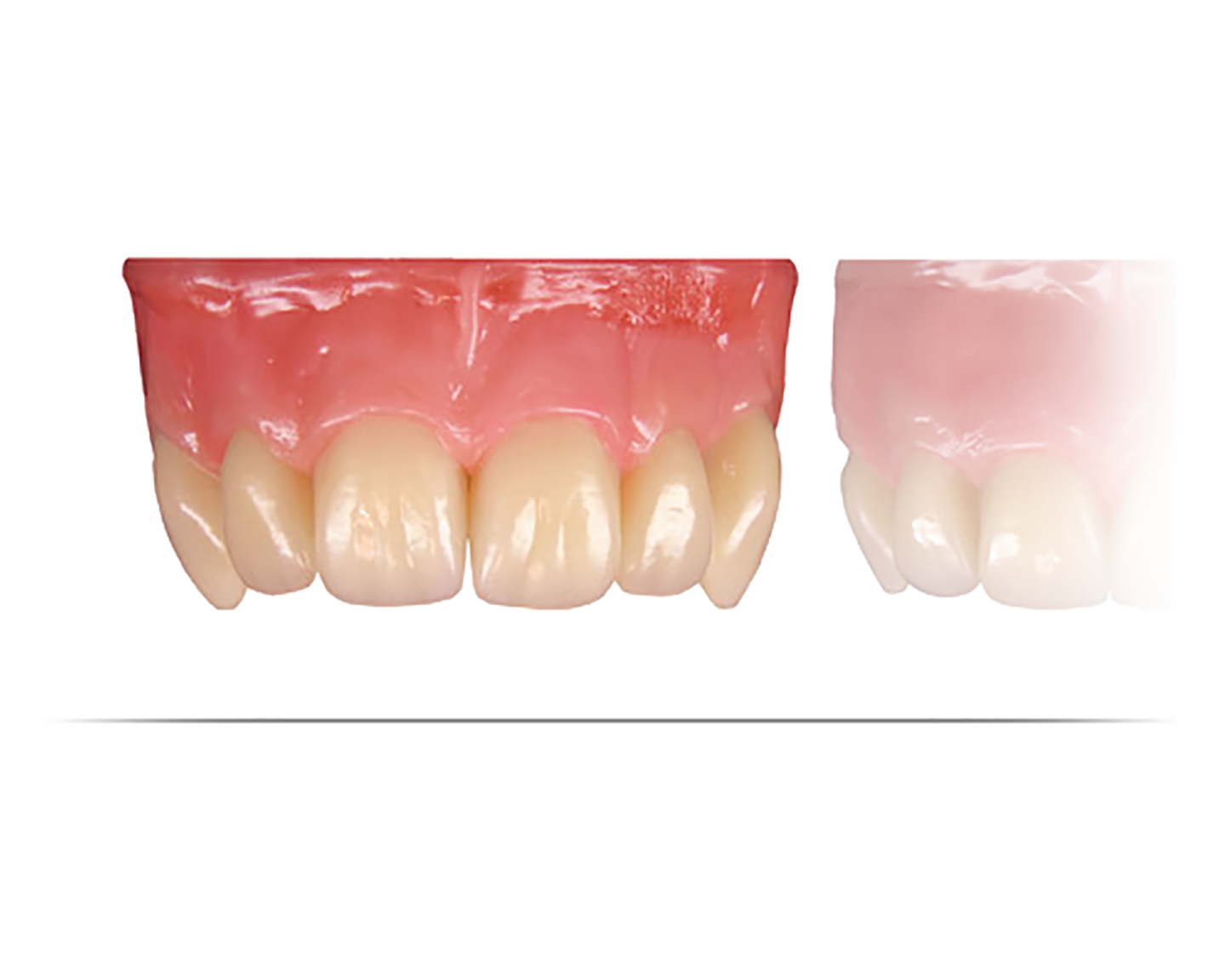
Anteriors 0/0
Universal (Group 66)
The group with the greatest flexibility of use for all age groups. These tooth shapes offer versatile use with square centers and narrow posterior incisors.
Vigorous (Group 77)
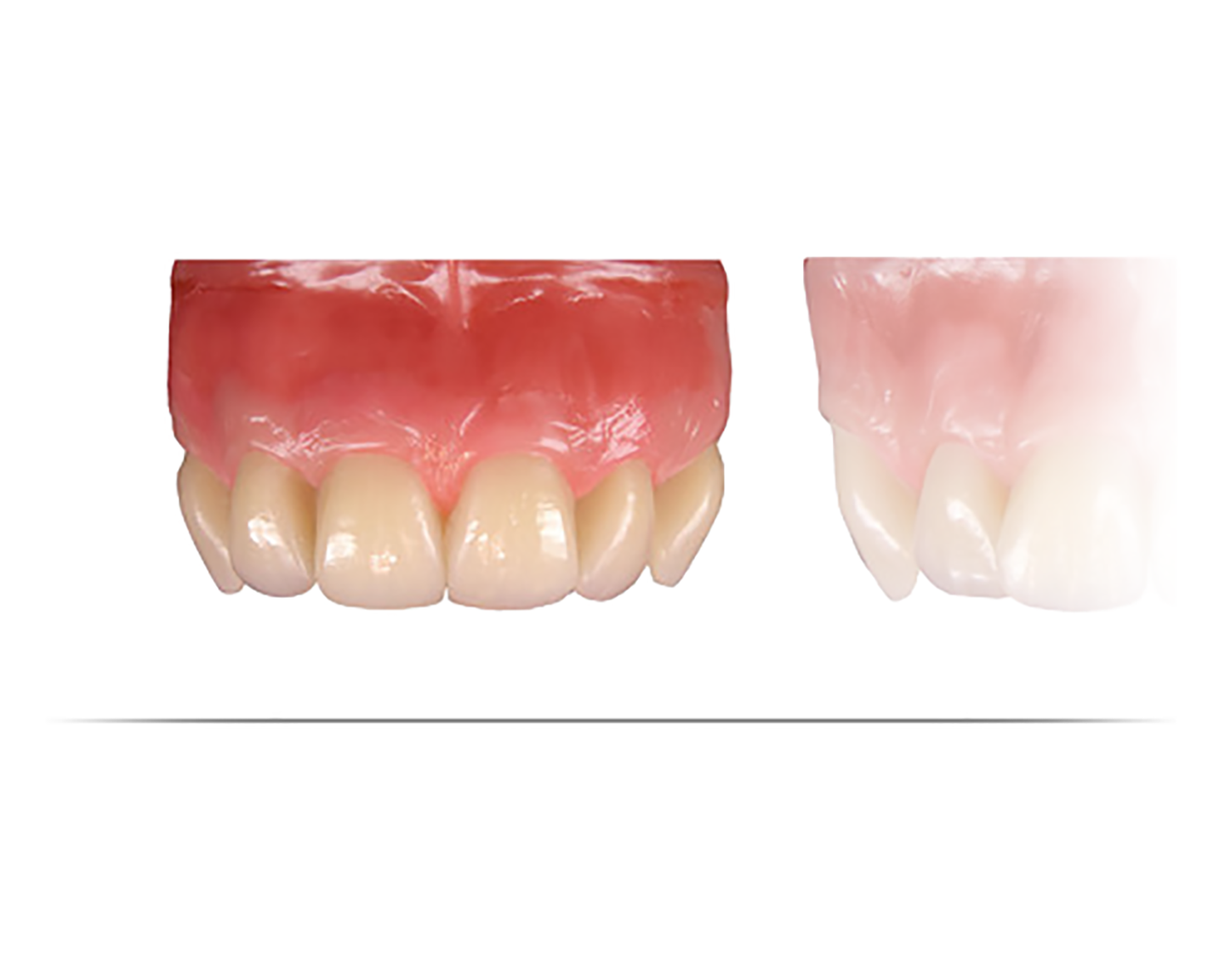
Anteriors 0/0
Vigorous (Group 77)
The powerful characteristics of these vigorous shapes with their angular contours are impressive. The look of these tooth shapes is underlined by the authentic abrasions on the incisal edges.
Individual (Group 88)
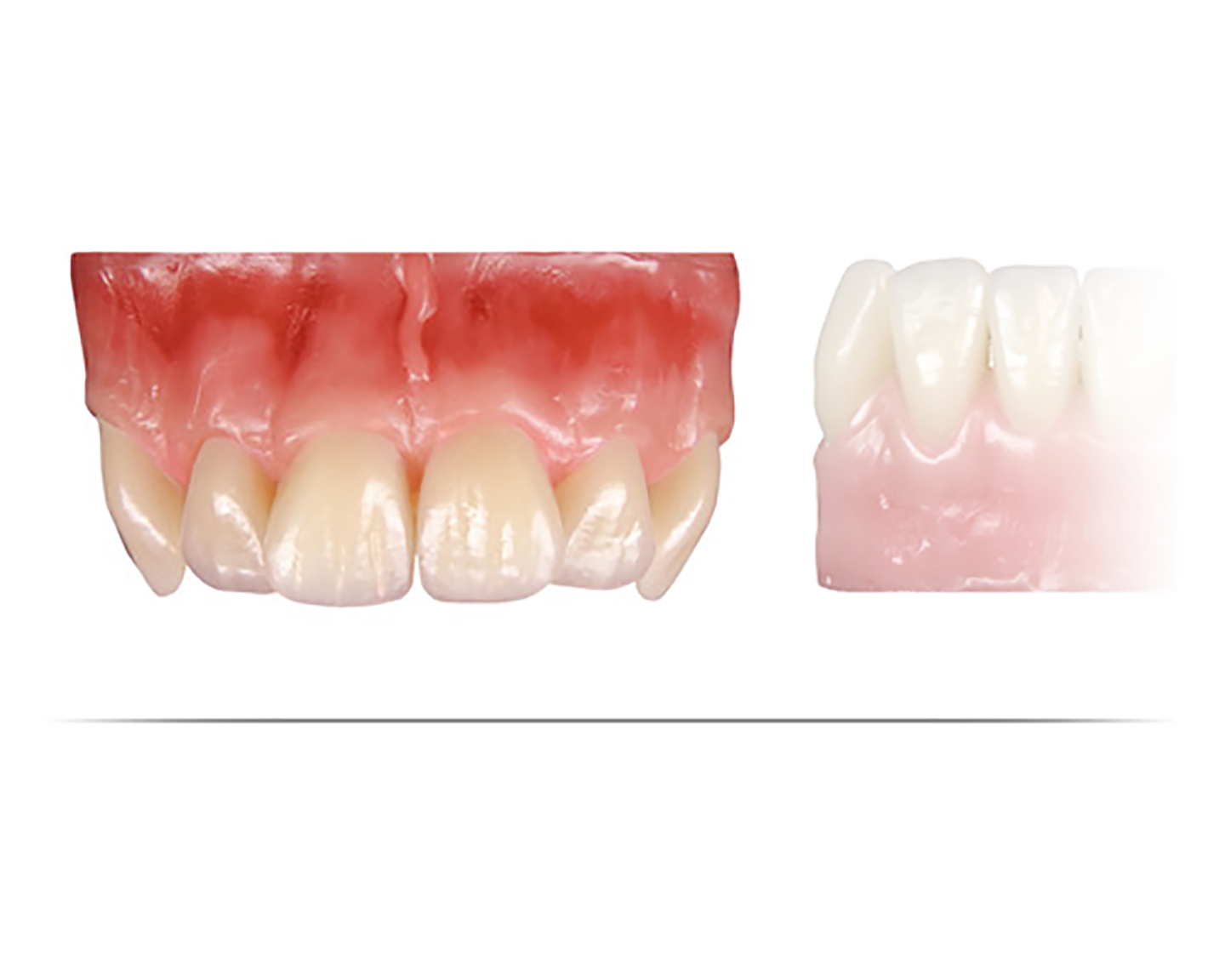
Anteriors 0/0
Individual (Group 88)
Natural and asymmetric shapes distinguish this group of anteriors. The shapes can be used for all age groups and create an unmistakable character through offset placement.
Mandible (Group 99)

Anteriors 0/0
Mandible (Group 99)
With advancing age, the mandibular anterior tooth shapes become more prominent. PhysioStar NFC+ mandibular shapes are unique in their natural morphology as well as from an esthetic point of view.
Material
NanoFilledComposite+
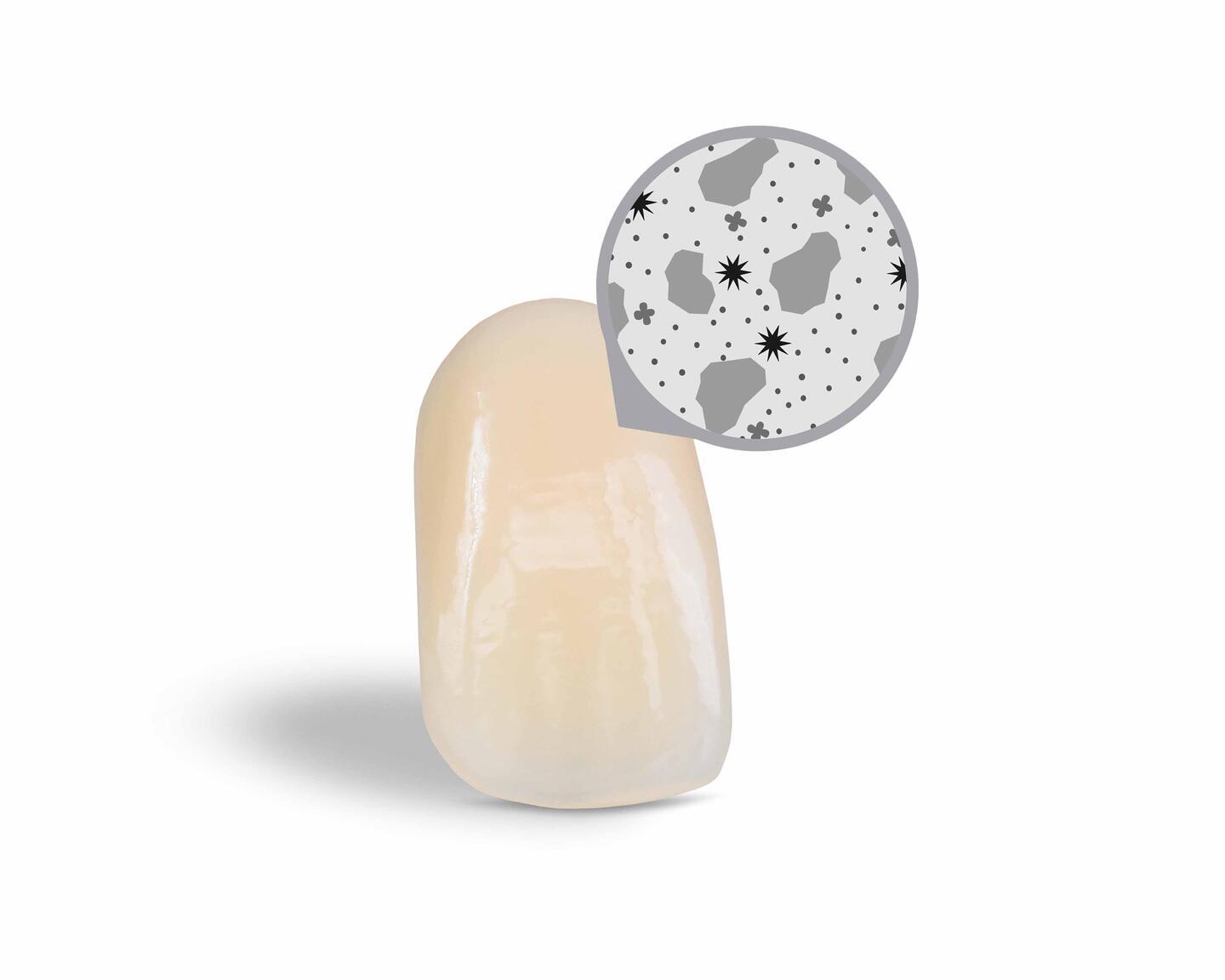
Material 0/0
NanoFilledComposite+
Abrasion resistant, which leaves the bite height fixed
The NFC+ material impresses with its very good abrasion resistance, which is significantly higher than that of the tooth materials previously used by Candulor. This counteracts premature tooth wear and the associated vertical dimensional loss.
NanoFilledComposite+
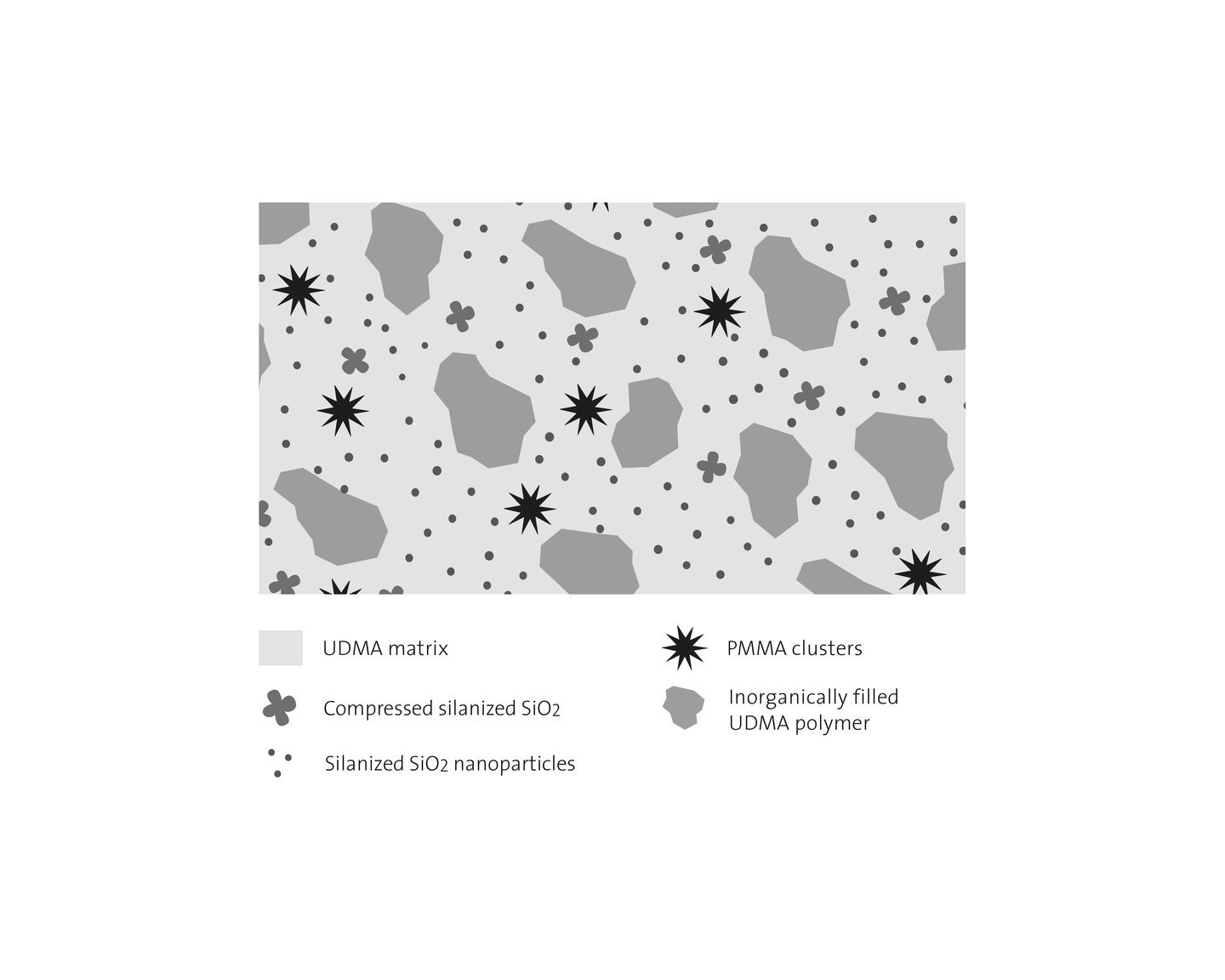
Material 0/0
NanoFilledComposite+
NFC+ is a composite based on a urethane dimethyl acrylate matrix (UDMA matrix) composed of various types and sizes of fillers as well as PMMA clusters. This results in very good physical material properties, such as abrasion resistance and shear strength. This makes these prosthetic teeth particularly suitable for implant work.
Composite material with a homogeneous distribution of inorganic fillers and PMMA clusters:
Layering

0/0
Layering
With the layering, close attention has been paid to give a natural and esthetic appearance. The material is built-up in four layers, which guarantees color fastness in the mouth and gives a particularly natural appearance.
Physiological setup
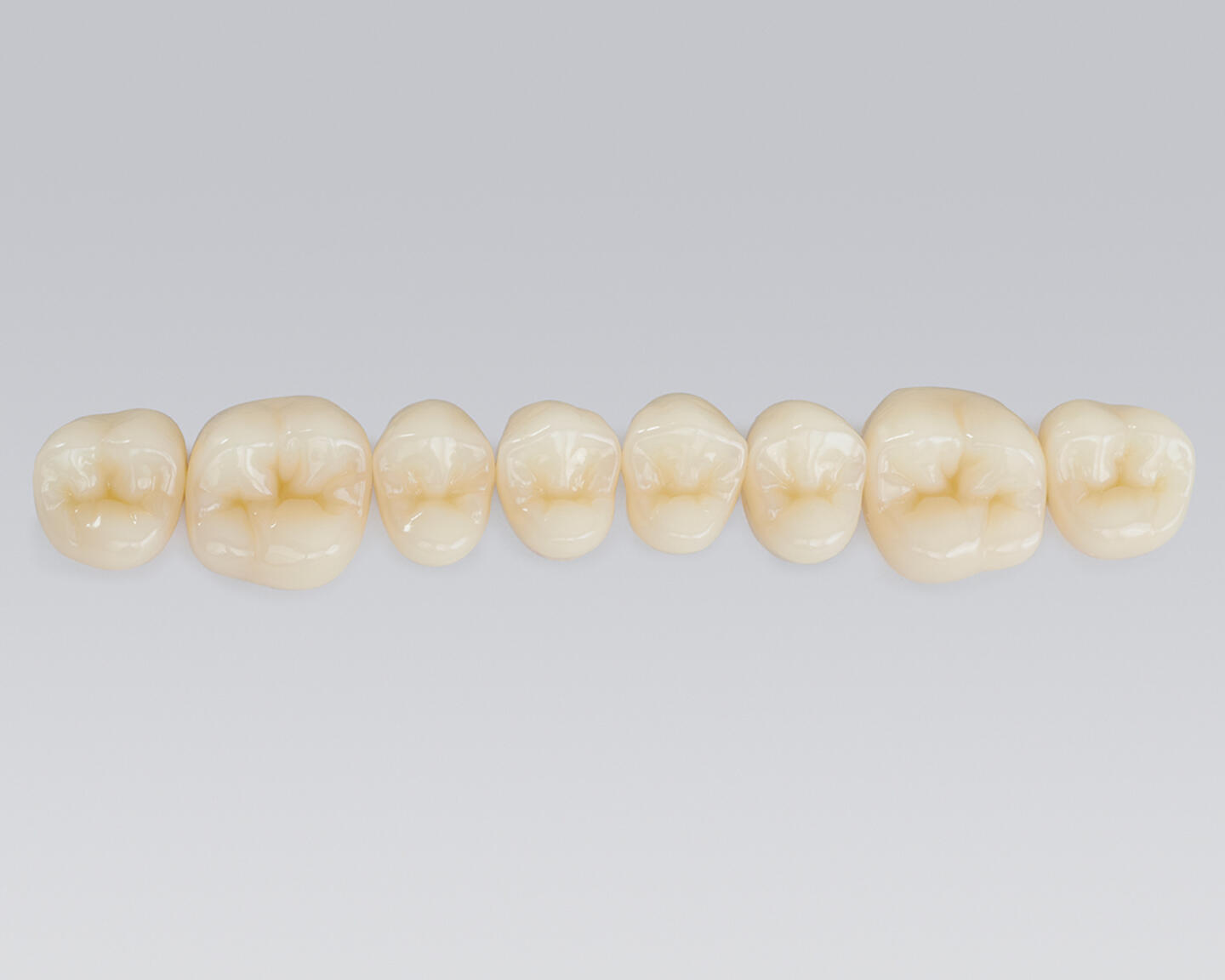
0/0
Physiological setup
The Bonartic II NFC+ meets the esthetic-morphological demands. The occlusion morphology of the lower posterior teeth stands in relation to the condyle path. The inclination of the occlusional plane (Spee, Wilson) can be arranged individually and reliably with the Bonartic II NFC+. It is the most important stabilizing element for every prosthetic restoration. The teeth were optimized in terms of a natural tooth to two-tooth relationship.
- Tooth to two-tooth relationship
- ABC contacts ‒ functional/balance-sided/centric
Setup according to Prof. Dr. A. Gerber

0/0
Setup according to Prof. Dr. A. Gerber
Prof. Dr. A. Gerber established the functional relationship between the shapes of the temporomandibular joints and the occlusal surfaces and as a result, developed the Condyloform tooth on this basis. The modern Condyloform II NFC+ offers anatomically good occlusion design with age-adapted morphological and natural occlusal proportions and functional areas. The mortar and pestle principle according to Prof. Dr. A. Gerber is also integrated. It enables autonomous chewing stability of each individual posterior tooth, as the upper palatal cusp occludes in the central fossa of its main antagonist.
- Tooth to tooth relationship
- Condyle theory according to Prof. Dr. A. Gerber
- Lingualized occlusion
- Joint shape-related guidance
- Autonomous chewing stability
3Shape

0/0
3Shape
The Candulor tooth lines PhysioStar NFC+, Condyloform II NFC+ and Bonartic II NFC+ are included as digital tooth data in the 3Shape Dental System CAD software.
An overview of the existing full denture tooth libraries can be found on the 3Shape website.
EXOCAD

0/0
EXOCAD
The Candulor tooth lines PhysioStar NFC+, Condyloform II NFC+ and Bonartic II NFC+ are included as digital tooth data in the exocad DentalCAD software.
The tooth data can also be found in the download area on the exocad website.


Exceptional variety of type-specific tooth shapes and a special surface profile distinguish this tooth line.
Learn more

The app is an aid for dentists, dental technicians and prosthodontists, which facilitates the selection of tooth molds.
Learn more
The Alameter is an aid for assessing the suitable set of anterior teeth of the tooth lines.
Learn more
The sliding caliper is an aid for evaluating the optimal tooth shape and size for the patient.
Learn moreSandra Räuber
CANDULOR AG
Simply send us your contact data – we will contact you promptly.
